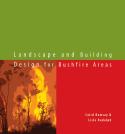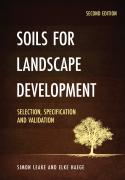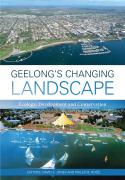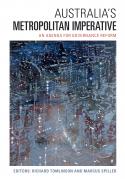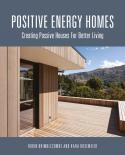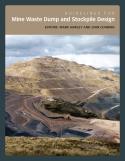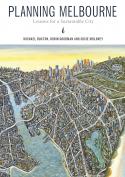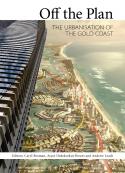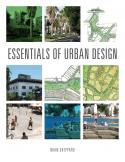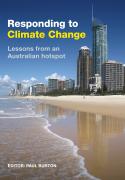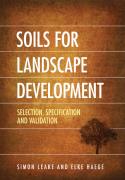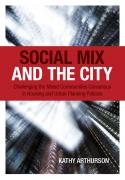Shortlisted in TAFE Vocational Education category in the 2004 Australian Awards for Excellence in Educational Publishing.
The devastation wreaked by bushfires on Australian homes and landscapes is an all too familiar scenario. Yet, why do we often see one house burn, whilst an apparently similar house on an adjacent block can endure? Research has shown that many factors affect the chances of a building surviving a bushfire. If you are designing landscapes and buildings in bushfire areas you need to be aware of these factors so that the chances of losses to life and property can be minimised.
Landscape & Building Design for Bushfire Areas integrates the latest scientific knowledge about buildings and bushfires with a flexible design approach.
The book contains two main sections:
1) Provides a clear description of what happens in a bushfire. It describes the environment in which bushfires occur, how a fire attacks, and how buildings are ignited and destroyed.
2) Sets out a practical design approach to the design of buildings and their immediate surroundings. It presents a range of options for designing the various elements of both landscapes and buildings in bushfire-prone areas.
This book encourages design for bushfire to be included as a normal part of designing in bushfire-prone areas, rather than as an undesirable add-on. It will assist planning and building regulatory authorities to improve and administer regulatory requirements and guidelines.
- Page 1Abstract
This section describes the environment in which bushfires occur and the problems facing people living in areas prone to bushfire. It explains how bushfires attack, how buildings ignite and the relevant attributes of vegetation.
Every bushfire season in Australia increases the urgency to design buildings and their landscape settings so that they are better adapted to their environments.
This chapter touches on some of the responses of people to the risk of bushfire in bushfire-prone areas and lists some common misconceptions. The chapter also describes the design approach used in this manual.
This chapter briefly describes the mechanisms by which a bushfire spreads. It gives a very simple classification of the fuel types that feed a bushfire and explains how these fuel types influence the attack on a building.
This chapter describes the different ways in which buildings can be ignited and damaged or destroyed in a bushfire. It explains how flammable litter and debris build up around, on, under and inside buildings. It then describes and illustrates the sequence of events from the approach of a bushfire until several hours after it has passed.
When designing the landscape near buildings, decisions have to be made about which species of plants are to be retained, removed, or planted anew. These decisions are influenced by the many different attributes each species possesses. This chapter deals in some detail with these considerations.
- Page 2Abstract
Every bushfire season in Australia increases the urgency to design buildings and their landscape settings so that they are better adapted to their environments.
This chapter touches on some of the responses of people to the risk of bushfire in bushfire-prone areas and lists some common misconceptions. The chapter also describes the design approach used in this manual.
- Page 8Abstract
This chapter briefly describes the mechanisms by which a bushfire spreads. It gives a very simple classification of the fuel types that feed a bushfire and explains how these fuel types influence the attack on a building.
- Page 13Abstract
This chapter describes the different ways in which buildings can be ignited and damaged or destroyed in a bushfire. It explains how flammable litter and debris build up around, on, under and inside buildings. It then describes and illustrates the sequence of events from the approach of a bushfire until several hours after it has passed.
- Page 22Abstract
When designing the landscape near buildings, decisions have to be made about which species of plants are to be retained, removed, or planted anew. These decisions are influenced by the many different attributes each species possesses. This chapter deals in some detail with these considerations.
- Page 33Abstract
This section describes a method for designing landscapes and buildings to overcome the problems of living in a bushfire area. It presents a range of options to assist in the design of the most important elements of landscapes and buildings.
This chapter explains the general method for designing landscapes and buildings. The chapters that follow give specific guidelines for the landscape and for buildings.
This chapter explains the method developed in this manual for designing landscapes around buildings. The practical working details or landscape design options are given in the next chapter: ‘Landscape design options’.
In this chapter, we consider each of the main component elements of the landscape and give options for their design. Designers can adopt any one design option to meet a specific objective and can also use more than one design option in combination, if they choose to do so, because the design options are not mutually exclusive.
This chapter explains the method developed in this manual for designing buildings. Details for building design are given in the next chapter, ‘Building design options’.
In this chapter each of the main component elements of buildings in bushfire areas will be considered and options given for their design. Designers can adopt any one design option to meet a specific design objective and they can use more than one design option in combination if they choose to do so.
In addition to the principles given here, there are two primary sources of information, Australian Standard AS 3959, Construction of Buildings in Bushfire-prone Areas, and Standards Australia Handbook, SA.HB36 (1993), Building in Bushfire-prone Areas.
- Page 34Abstract
This chapter explains the general method for designing landscapes and buildings. The chapters that follow give specific guidelines for the landscape and for buildings.
- Page 39Abstract
This chapter explains the method developed in this manual for designing landscapes around buildings. The practical working details or landscape design options are given in the next chapter: ‘Landscape design options’.
- Page 47Abstract
In this chapter, we consider each of the main component elements of the landscape and give options for their design. Designers can adopt any one design option to meet a specific objective and can also use more than one design option in combination, if they choose to do so, because the design options are not mutually exclusive.
- Page 67Abstract
This chapter explains the method developed in this manual for designing buildings. Details for building design are given in the next chapter, ‘Building design options’.
- Page 72Abstract
In this chapter each of the main component elements of buildings in bushfire areas will be considered and options given for their design. Designers can adopt any one design option to meet a specific design objective and they can use more than one design option in combination if they choose to do so.
In addition to the principles given here, there are two primary sources of information, Australian Standard AS 3959, Construction of Buildings in Bushfire-prone Areas, and Standards Australia Handbook, SA.HB36 (1993), Building in Bushfire-prone Areas.


